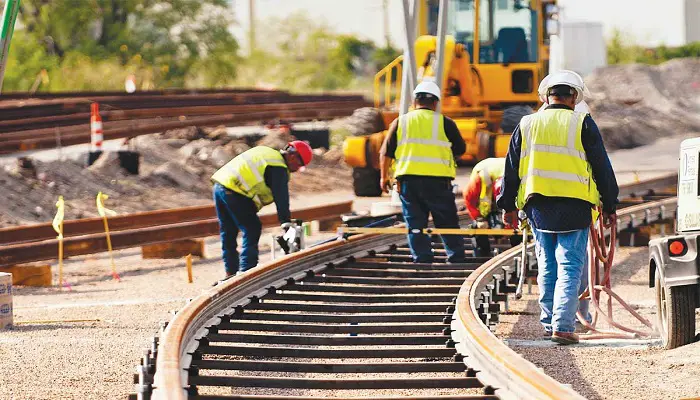The government of Tanzania has announced to commence operations on its phase one electric Standard Gauge Railway (SGR) by December next year. Government spokesman, Dr Hassan Abbas confirmed the reports and said, the 300Km phase running from Dar es Salaam to Morogoro is 33% complete.
The SGR project which is being undertaken by Turkish company Yapi Merkezi, in partnership with a Portuguese firm, Mota-Engil Africa begun construction works in May last.
“The railway in this country was built in 100 years ago, and now we are building the SGR,” said the Government spokesman, Dr Hassan.
Also read: Ghana to revamp its railway sector
Dar es Salaam to Morogoro railway
The Dar es Salaam to Morogoro railway will have 6 stations in Dar es Salaam, Pugu, Soga, Ruvu, Ngerengere and Morogoro. There will be three passenger trains in phase one at the starting point that will be taking daily round trips between Dar es Salaam and Morogoro. Each passenger train is capable of making 9 to 12 trips a day or even more
The train will use concrete sleepers which improve durability and give the railway network capacity to carry up to 35 tonnes per axle loads. The rails can survive to 40 year before any major repairs while the train bridge can survive up to 100 years. The Tanzania SGR will have a speed capacity of 160Km/h in comparison to other SGR’s such as Kenya and South Africa that can move up to 120Km/h.
Benefits of the SGR
Over 26,000 employment opportunities have been created by the US $1.9bn project and more job opportunities will be created in 2019 once the station becomes fully operational. All this is in efforts to make Tanzania a middle-income economy by 2025 through industrialization.
According to Dr. Hassan Abbas, the Director General of Information Department and Government’s Chief Spokesperson, boosting the transport network to reach more regions greatly facilitates the country’s economy. He further added the importance of the network especially to the landlocked countries such as Uganda, Rwanda, Zambia and DRC.
Currently, the Ethio-Djibouti standard gauge railway project is the first trans-boundary and longest electrified railway in Africa.


I am very surprised to learn that DRC was a landlocked country.
– The sleepers are only aspect of allowing heavy axle loads. 35 ton axle loads are very high and every aspect of the line will have to be designed for it. Unless there is a plan to transport heavy hauls it would not be financially viable to build a line for that axle load. It only refers to passenger trains which seldom exceed 20 ton axle loads.
– Rails are not defined in terms of life in years but in tonnages throughput (million gross tons). On very low axle loads and frequent grinding it may last 40 years but that number is pointless. On 35 ton axle loads it may at best last a few years depending on the throughput.
– The Gautrain on standard gauge in SA travels at 160 km/h.
-If I understand the article correct the line is 300 km long. Its very far from the longest electrified line in Africa. if the 300 km is 33% of the total it is still not the longest. If you take only Cape Town to Pretoria is 1500 km and it is still electrified way beyond that to the Norther Province. I cannot find Ethio on the map so I cannot confirm the the actual length.
– I am not sure what is meant by trans boundary but South Africa’s railway lines are connected to all our neighbours.
– I would have liked to see more about the electrical infrastructure such as voltage etc. since that is afterall the caption of the article.
Whichever way, I am delighted that Africa is investing in railway infrastructure since this is definitely putting Africa on track (pun intended) for economic growth.
You are welcome in future to consult me to get the facts right. Find me on LinkedIn.
Dr. Leon Zaayman
Railway Track Infrastructure Maintenance Consultant
Hello kindly elaborate on the errors
This article is riddled with engineering inaccuracies and other errors, my goodness!